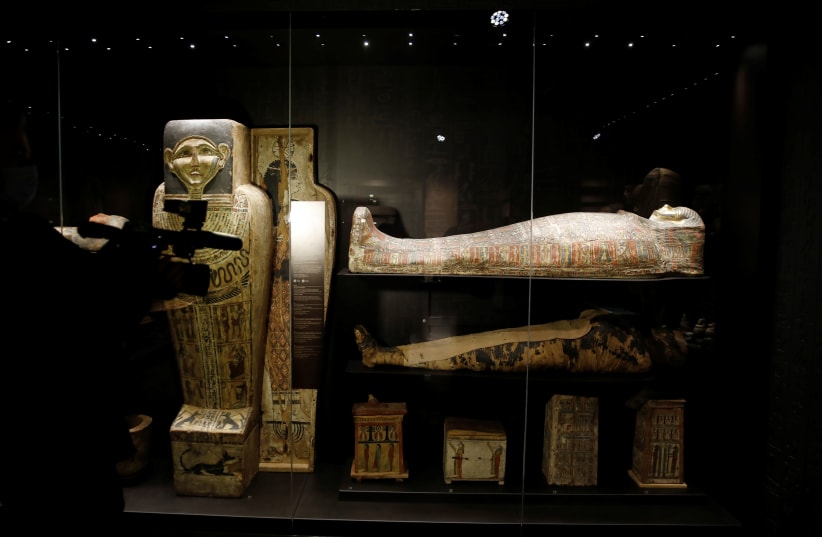People in ancient Egypt were mummified to secure a clearer path to divine powers, not to preserve their bodies, Egyptologists in England say. This discovery derails a theory that has been taught throughout history across the globe.
Researchers from the Manchester Museum at the UK's University of Manchester brought historical misconceptions to light in their new exhibit, "Golden Mummies of Egypt," which is set to take place in early 2023. These experts debunked the Victorian-era theory that people who were mummified in ancient Egypt were focused on preserving their bodies.
Campbell Price, the curator of the museum's Egypt and Sudan exhibits, has debunked the longstanding belief that people laid to rest in a mummified form in ancient Egypt were hopeful to bring their bodies with them in the afterlife. Instead, these researchers found that materials and the presentation of the sarcophagus, both inside and outside, served a more specific purpose than previously thought.
Historians believed for centuries that people were mummified for bodily preservation based on the use of salt in the preservation process. Since fish were preserved with salt in ancient times, researchers concluded that salt in the burial process suggested the same process. This fueled a misconception that followed throughout history.
Ancient Egypt used a salty substance that differed from salt itself. They used natron, a naturally occurring mineral (a blend of sodium carbonate, sodium bicarbonate, sodium chloride and sodium sulfate). This substance was found in excess on the beds of the Nile river and proved to be a vital part of mummification.
These individuals were mummified in order to help them connect to higher powers. They frequently made offerings to the gods while they were living, so making offerings with incense for the afterlife would be no different. "We also know that natron was used in temple rituals [and applied to] the statues of gods. It was used for cleansing," Price said. Similarly, incense played a major role in prayer rituals for both the living and dead.
"Look at frankincense and myrrh — they're in the Christian story of Jesus and were gifts from the three wise men," Price said. "In ancient Egyptian history, we've found that they were also appropriate gifts for a god."
Upon the excavation of Egyptian tombs, archaeologists found incense both buried with bodies and on the surface of each sarcophagus. Incense were reportedly used as offerings to the gods.
"Even the word for incense in ancient Egyptian was 'senetjer' and literally means 'to make divine.' When you're burning incense in a temple, that's appropriate because that's the house of a god and makes the space divine. But then when you're using incense resins on the body, you're making the body divine and into a godly being. You're not necessarily preserving it."
Mummies were placed in a sarcophagus, which was decorated extensively to portray the likeness of the person buried inside. Though previously believed it was for artistic purposes, researchers now believe that their decorations were meant to help the deceased be recognized on their way to the afterlife.
How did this misconception survive for so long?
The belief that mummies were made to preserve bodies followed a Victorian-era belief that the needing bodies needed to be preserved to be complete in the afterlife. This was a medical obsession of the era that influenced researchers into sticking with a single solution for why ancient Egyptians preserved human remains in the way they did.
Price elaborated on the now-defunct theory, and can understand how experts got it wrong at the time. "This included removing the internal organs. I think that actually has a somewhat deeper meaning…and is basically about turning the body into a divine statue because the dead person has been transformed."
Now that the air has been cleared, these mummies can finally rest easy.

